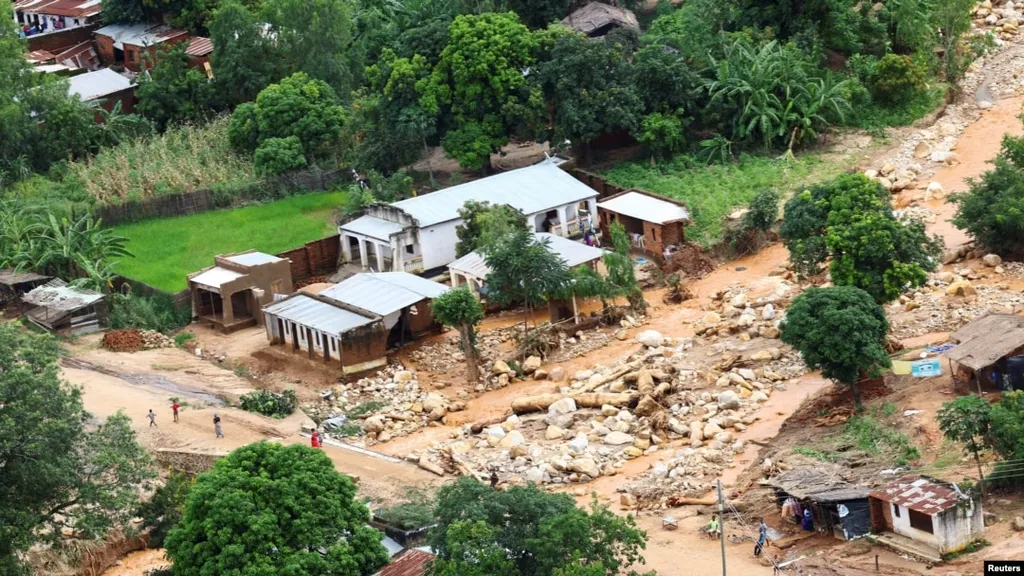In the shadow of Mount Mulanje, where the slopes once yielded bountiful harvests, Alex Maere stands on land that now tells a different story. The 59-year-old farmer watched as Cyclone Freddy carved through southern Malawi last year, stripping away decades of labor along with the fertile topsoil that sustained his family. Where he once harvested nearly a ton of corn each season, the storm left him with little more than a handful—just 8 kilograms from a farm reduced to sand and stone.
For Maere, the disaster was a turning point. Facing the reality that traditional farming methods could no longer guarantee survival, he turned to an unlikely ally: artificial intelligence. Today, he is among thousands of Malawian smallholders using *Ulangizi*, a generative AI chatbot designed by the non-profit Opportunity International to deliver tailored farming advice. The tool, whose name means “advisor” in Chichewa, arrives at a critical moment. Malawi’s agriculture sector—already strained by cyclones, drought, and some of the world’s highest poverty rates—is now a defining issue in next week’s national elections, with over 80% of the population dependent on farming for their livelihoods.
The chatbot’s suggestion to diversify into potatoes alongside his usual corn and cassava proved transformative. Following its guidance, Maere cultivated a half-pitch plot of the tuber, netting over $800 in sales—enough to cover his children’s school fees and restore a measure of stability. “This is not a joke,” he said, recalling the devastation of his fields. “But now, there is hope.”
Maere’s experience underscores AI’s growing role in African agriculture, where smallholder farms produce up to 80% of the food supply yet struggle with stagnant productivity. Across the continent, AI tools are being deployed to diagnose crop diseases, predict droughts, optimize fertilizer use, and even connect farmers with affordable machinery. Investment in agritech has surged, with private funding in sub-Saharan Africa jumping from $10 million in 2014 to $600 million in 2022, according to the World Bank. But the technology’s promise is tempered by stubborn realities: patchy internet, low smartphone ownership, and the continent’s linguistic diversity, which often leaves AI tools struggling to communicate effectively.
*Ulangizi* attempts to bridge these gaps. Accessible via WhatsApp in both Chichewa and English, the app allows users to type, speak, or even upload photos of ailing crops to receive audio or text responses. For farmers like Maere who lack smartphones, the solution lies in “human loops”—local agents like 33-year-old Patrick Napanja, who carries a device loaded with the app to remote villages. “I used to struggle to answer some farming questions,” Napanja admitted. “Now, I have help.” Yet even this system has limits: slow connectivity often delays responses, forcing agents to hike to higher ground in search of a signal, while group meetings can stall as farmers wait for advice to load.
The stakes for accuracy are high. A misdiagnosed crop disease or flawed recommendation could devastate a season’s yield, eroding trust in technology that many farmers are encountering for the first time. “If AI fails even once, farmers may never try it again,” warned Daniel Mvalo, a Malawian tech specialist. The government has sought to mitigate this risk by aligning *Ulangizi*’s advice with official agricultural guidelines, but scaling the tool remains a challenge. Webster Jassi, an extension methodologies officer at Malawi’s agriculture ministry, noted that widespread adoption hinges not just on smartphones but on affordable internet access—a hurdle in a country where both are scarce.
Still, early signs suggest that AI’s strength may lie in its ability to amplify existing community networks. Farmers with access to the app are sharing its insights with neighbors, creating a ripple effect that boosts productivity without universal tech adoption. For Maere, the shift has been profound. “Before, I farmed as my father did,” he said. “Now, I farm with knowledge.” In a region where climate shocks are increasingly the norm, that knowledge may prove as vital as the soil itself.

